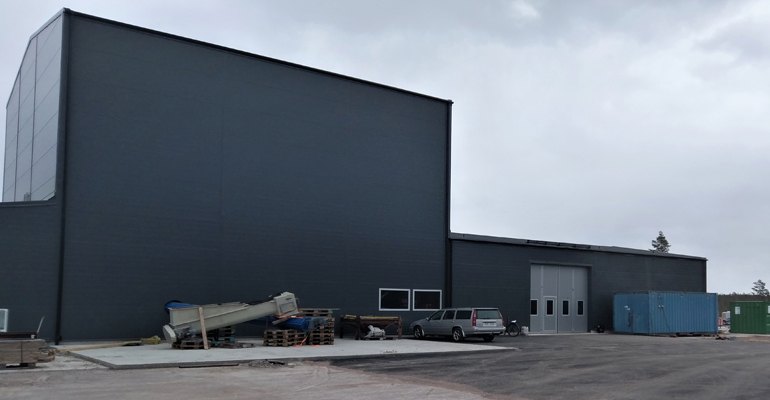Twelve months ago, a fire completely destroyed Stockhorvan Trä & Pellets AB's wood pellet plant outside Hultsfred in southern Sweden. In November 2016, the company decided to rebuild and expand the pellet facility with production to begin during the latter half of 2017.
On June 23 2016, a fire broke out at Stockhorvan Trä & Pellets AB’s 16 000 tonne per annum pellet production plant located in Hultsfred, Sweden. No-one was hurt in the blaze but the production facility was completely destroyed. The fire had originated in a truck unloading shavings at the plant that spread to the production facility via a conveyor.
Since the fire, Stockhorvan has continued to deliver pellets to residential customers by purchasing pellets from other manufacturers. But larger customers have chosen to source from other suppliers. In November 2016, the company announced that it was to rebuild the plant and expand production capacity.
Our insurance company has enabled us to rebuild the factory. Production is expected to start in June/July 2017. We wanted to start in March or April to come up with a higher production for 2017, said Peter Petersson, CEO of Stockhorvan.
Production in 2017 is expected to be around 10 000 tonnes and expected to increase to around 28 000 tonnes by 2018.
Two-storey production hall
In mid-March, the concrete was poured for the new production hall.
– We had already prepared the foundations and had the walls and roofing ready on site to win time, said Peter Petersson.
The new building has a different layout than the old one. The production hall is built at a height.

– It is a two-storey solution where the material is handled on the second floor and then sent down to the press on the ground level. The solution is space-saving with fewer transporter and conveyors needed for the feedstock, explained Peter Petersson.
Prepared for increased production
Stockhorvan has chosen to buy a pellet press from Salmatec, the same supplier as before. The new press will be a little bigger and will have a capacity of five tonnes per hour instead of four tonnes per hour. The annual capacity will be just over 20 000 tonnes.

We have prepared the plant for another pellet press and double capacity, something we expect to put in the fall of 2018. We evaluated pellets presses from several suppliers, but they could not guarantee that we would get the same quality as we wanted and as we have had with the old press from Salmatec. We knew it worked with a pellets press from Salmatec, so it was decided to select the same supplier as before, said Peter Petersson.
A Champion hammer mill ensures the correct size of the material before it enters the press.
– We use shavings as feedstock just like before, but have plans to put in a dryer to be able to use sawdust as raw material. The new facility will have a bagging line from Fisker and a bulk dispatch, said Peter Petersson.
High-quality pellets
– We have our own unique pellet quality that comes from our manufacturing process, said Peter Petersson, describing the process.
Stockhorvan is extremely careful with the raw material and blends it. Several times per hour, the pellets are checked for density, strength, length and other variables. Steam, water and starch are used in a certain way.
– We know how to run the plant and we are probably alone in having the high-quality as we have. We have seen examples of residential customers being able to reduce consumption by five percent after switching to our pellets, ended Peter Petersson.


